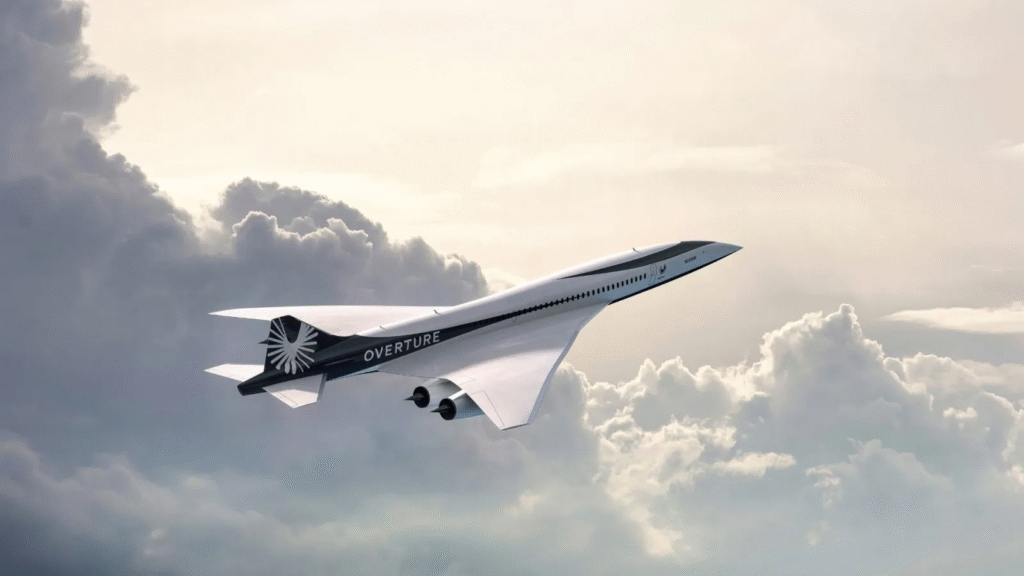## Introduction
As of July 2024, the revival of supersonic commercial flight had reached a critical development phase, with various aerospace companies and regulatory bodies intensely focused on overcoming the challenges of noise, fuel efficiency, emissions, and economic viability. Supersonic transport (SST), once exemplified by the Concorde, saw renewed global interest led by firms such as Boom Supersonic, with the support of major airlines and governments. This resurgence marked a turning point for high-speed air travel, targeting a new generation of environmentally conscious and economically sustainable supersonic jets.
## Historical Context
The Concorde, jointly developed by the UK and France, operated from 1976 to 2003. Its retirement was due to high operating costs, environmental concerns, and declining commercial viability. Despite these challenges, the allure of drastically reduced transoceanic flight times persisted, leading to ongoing research efforts post-Concorde by entities like NASA and Lockheed Martin.
## Boom Supersonic and the Overture Jet
The most significant player in 2024 was Boom Supersonic, a Denver-based aerospace company aiming to bring back supersonic travel with its Overture jet. Overture was designed to carry 6480 passengers at Mach
1.7 over water, cutting flight times nearly in half compared to subsonic aircraft. For example, a New York to London route would be completed in approximately 3.5 hours.
### Technical Specifications

- **Speed**: Mach 1.7 (approx. 1,304 mph)
- **Range**: 4,250 nautical miles
- **Engines**: Symphony (under development with Florida Turbine Technologies, GE Additive, andStandardAero)
- **Fuel**: 100% sustainable aviation fuel (SAF)
- **Configuration**: Four-engine layout with optimized noise reduction for airport operations
In June 2024, Boom had completed construction of the Iron Bird test rig and was nearing the rollout of its XB-1 supersonic demonstrator’s flight test campaign, initially expected in late 2024. Although Overture itself was not yet airborne, Boom announced successful ground tests and system integration milestones for key subsystems including avionics, electrical, hydraulics, and flight control.
## Airline Partnerships
As of July 2024, Boom had secured partnerships and purchase commitments from several major airlines:
- **United Airlines**: 15 firm orders with an option for 35 more
- **American Airlines**: 20 preorders with options for 40 more
- **Japan Airlines**: Strategic investment and 20 preorders
These commitments indicated a clear commercial interest in reviving SST, contingent on meeting environmental and operational criteria. Airlines expressed support for Booms goal of net-zero carbon operations.
## Regulatory Developments
Supersonic flight posed numerous regulatory challenges, especially concerning noise. The FAA and ICAO were actively working on new noise standards and operational criteria specifically tailored for next-generation SSTs. In July 2024:
- The **FAA** had finalized its “Noise Certification Rule for Supersonic Aircraft” mandating takeoff andlanding noise limits aligned with ICAO Chapter 14 standards.
- The **ICAO Committee on Aviation Environmental Protection (CAEP)** continued work on developingcruise noise and emissions standards, which were not finalized as of mid-2024.
Overland flight at supersonic speeds remained prohibited in the U.S. and much of Europe due to sonic boom regulations. However, NASA’s **X-59 QueSST** program, part of the Low-Boom Flight Demonstrator effort, was influential in shaping future policy. The aircraft was built to demonstrate a “thump” rather than a “boom,” potentially paving the way for regulatory changes.
## Environmental Concerns
Booms focus on using 100% SAF and designing Symphony engines for reduced NOx emissions aligned with global aviation sustainability goals. The use of SAF was critical in addressing criticism of high fuel burn rates associated with SSTs.
Nevertheless, environmental groups expressed skepticism. The **International Council on Clean Transportation (ICCT)** published a report in early 2024 estimating that SSTs would emit 79 times more CO2 per passenger-kilometer than subsonic aircraft. Boom responded by highlighting offset programs, engine efficiency improvements, and SAF integration.
## Global Competitors and Parallel Projects
Other organizations were also exploring supersonic or near-supersonic passenger aircraft:
- **NASA and Lockheed Martin**: Continued X-59 testing as a research platform for low-boom technologies- **Hermeus** (Atlanta-based): Developed a Mach 5 hypersonic aircraft concept primarily aimed at defense markets but with potential civilian applications
- **Exosonic**: A California startup developing a low-boom supersonic jet for business and government use
While none of these competitors had progressed as far as Boom in securing commercial orders, they contributed to a growing ecosystem of innovation around high-speed aviation.
## Market Viability and Business Case
The business model for supersonic commercial aviation in 2024 centered around premium transoceanic markets where time savings were worth the cost. Boom estimated ticket prices would be comparable to current business class fares. Demand forecasts from industry analysts projected:
- Up to **500600 aircraft** in potential demand over two decades
- Focus on **long-haul routes** such as New YorkLondon, TokyoSan Francisco, and SydneySingaporeChallenges included aircraft certification, route network planning, infrastructure compatibility, and competitive dynamics with business jet manufacturers and long-haul widebody services.
## Infrastructure and Manufacturing
Booms Overture Superfactory in Greensboro, North Carolina, saw major progress. As of July 2024:
- Final assembly line construction was complete
- Tooling for wing and fuselage assembly was underway
- Workforce expansion continued, targeting over 2,400 jobs by 2030
The company was also developing partnerships with SAF suppliers and airports to establish fuel and maintenance infrastructure aligned with sustainability goals.
## Conclusion
As of July 2024, supersonic commercial flight had moved beyond conceptual design into pre-manufacturing and testing. Boom Supersonics Overture led the field with strong airline backing, technical progress, and a sustainability-oriented roadmap. However, technical, regulatory, and economic challenges remained substantial. The coming years were expected to determine whether supersonic travel would return not just as a technological marvel but as a viable, sustainable component of global commercial aviation.


